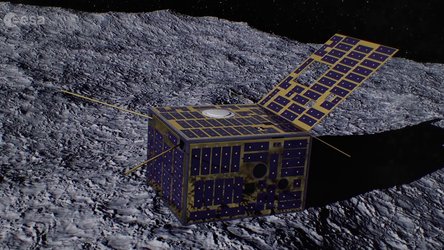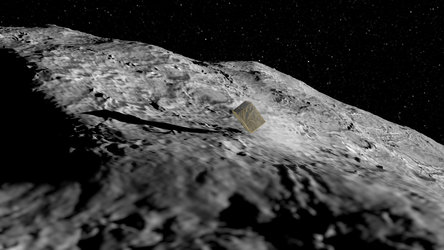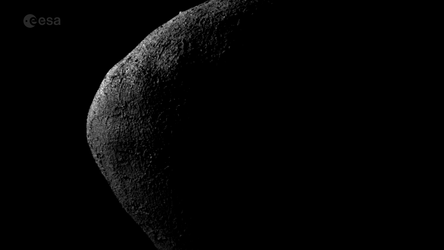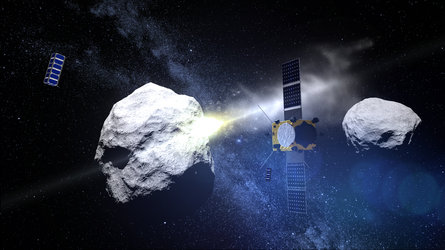Accept all cookies Accept only essential cookies See our Cookie Notice

About ESA
The European Space Agency (ESA) is Europe’s gateway to space. Its mission is to shape the development of Europe’s space capability and ensure that investment in space continues to deliver benefits to the citizens of Europe and the world.
Highlights
ESA - United space in Europe
This is ESA ESA facts Member States & Cooperating States Funding Director General Top management For Member State Delegations European vision European Space Policy ESA & EU Space Councils Responsibility & Sustainability Annual Report Calendar of meetings Corporate newsEstablishments & sites
ESA Headquarters ESA ESTEC ESA ESOC ESA ESRIN ESA EAC ESA ESAC Europe's Spaceport ESA ESEC ESA ECSAT Brussels Office Washington OfficeWorking with ESA
Business with ESA ESA Commercialisation Gateway Law at ESA Careers Cyber resilience at ESA IT at ESA Newsroom Partnerships Merchandising Licence Education Open Space Innovation Platform Integrity and Reporting Administrative Tribunal Health and SafetyMore about ESA
History ESA Historical Archives Exhibitions Publications Art & Culture ESA Merchandise Kids Diversity ESA Brand Centre ESA ChampionsLatest
Space in Member States
Find out more about space activities in our 23 Member States, and understand how ESA works together with their national agencies, institutions and organisations.
Science & Exploration
Exploring our Solar System and unlocking the secrets of the Universe
Go to topicAstronauts
Missions
Juice Euclid Webb Solar Orbiter BepiColombo Gaia ExoMars Cheops Exoplanet missions More missionsActivities
International Space Station Orion service module Gateway Concordia Caves & Pangaea BenefitsLatest
Space Safety
Protecting life and infrastructure on Earth and in orbit
Go to topicAsteroids
Asteroids and Planetary Defence Asteroid danger explained Flyeye telescope: asteroid detection Hera mission: asteroid deflection Near-Earth Object Coordination CentreSpace junk
About space debris Space debris by the numbers Space Environment Report In space refuelling, refurbishing and removingSafety from space
Clean Space ecodesign Zero Debris Technologies Space for Earth Supporting Sustainable DevelopmentLatest
Applications
Using space to benefit citizens and meet future challenges on Earth
Go to topicObserving the Earth
Observing the Earth Future EO Copernicus Meteorology Space for our climate Satellite missionsCommercialisation
ESA Commercialisation Gateway Open Space Innovation Platform Business Incubation ESA Space SolutionsEnabling & Support
Making space accessible and developing the technologies for the future
Go to topicBuilding missions
Space Engineering and Technology Test centre Laboratories Concurrent Design Facility Preparing for the future Shaping the Future Discovery and Preparation Advanced Concepts TeamSpace transportation
Space Transportation Ariane Vega Space Rider Future space transportation Boost! Europe's Spaceport Launches from Europe's Spaceport from 2012Latest

Landing on an asteroid
Thank you for liking
You have already liked this page, you can only like it once!
This is the microlander that ESA’s proposed Asteroid Impact Mission would put down on its target asteroid.
The asteroid body in question is just 170 m in diameter – the smaller body of the binary Didymos system – so roughly the same size as the Great Pyramid of Giza. It orbits just 1.2 km above the larger 800-m diameter primary Didymos asteroid (shown in the background here), to complete a circuit every 12 hours.
Around the size of a microwave oven, the microlander would be ESA’s first lander on a small body since Rosetta’s Philae lander touched down on Comet 67P/Churyumov–Gerasimenko in November 2014.
The asteroid lander, named Mobile Asteroid Surface Scout-2 (Mascot-2), is under study by the German Aerospace Center DLR. Mascot-1 is a lander already on board Japan's Hayabusa 2 mission, which was launched on 3 December 2014 to reach its target asteroid in 2018.
Like its predecessor, Mascot-2 would carry a compact wide-angle camera and a radiometer for close-up examination of the asteroid surface.
In addition, Mascot-2 would be equipped with a low-frequency radar to help probe the interior of the asteroid it rests on – with AIM picking up the radar signals from the asteroid’s far side. Accelerometers will record full details of its impact with the surface, while solar panels should give the micro-lander at least three months of working life.
AIM, currently undergoing detailed design work in preparation for a ‘go/no go’ decision at the end of this year, would be humanity’s first mission to a double asteroid system.
NASA’s own Double Asteroid Redirection Test probe, or DART, will impact the same asteroid, with AIM providing detailed before-and-after mapping to help assess the effects and test planetary defence techniques. The two missions together are known as the Asteroid Impact and Deflection Assessment (AIDA) mission.
ESA has teamed up with the organisers of the annual Asteroid Day on 30 June to increase public awareness of potential asteroid impacts with Earth, and the importance of increasing our knowledge about these small bodies.
-
CREDIT
ESA - ScienceOffice.org -
LICENCE
ESA Standard Licence

Mascot-2 lander model

AIM: Asteroid touchdown

AIM's asteroid lander

AIM’s eye view of asteroids















 Germany
Germany
 Austria
Austria
 Belgium
Belgium
 Denmark
Denmark
 Spain
Spain
 Estonia
Estonia
 Finland
Finland
 France
France
 Greece
Greece
 Hungary
Hungary
 Ireland
Ireland
 Italy
Italy
 Luxembourg
Luxembourg
 Norway
Norway
 The Netherlands
The Netherlands
 Poland
Poland
 Portugal
Portugal
 Czechia
Czechia
 Romania
Romania
 United Kingdom
United Kingdom
 Slovenia
Slovenia
 Sweden
Sweden
 Switzerland
Switzerland
























